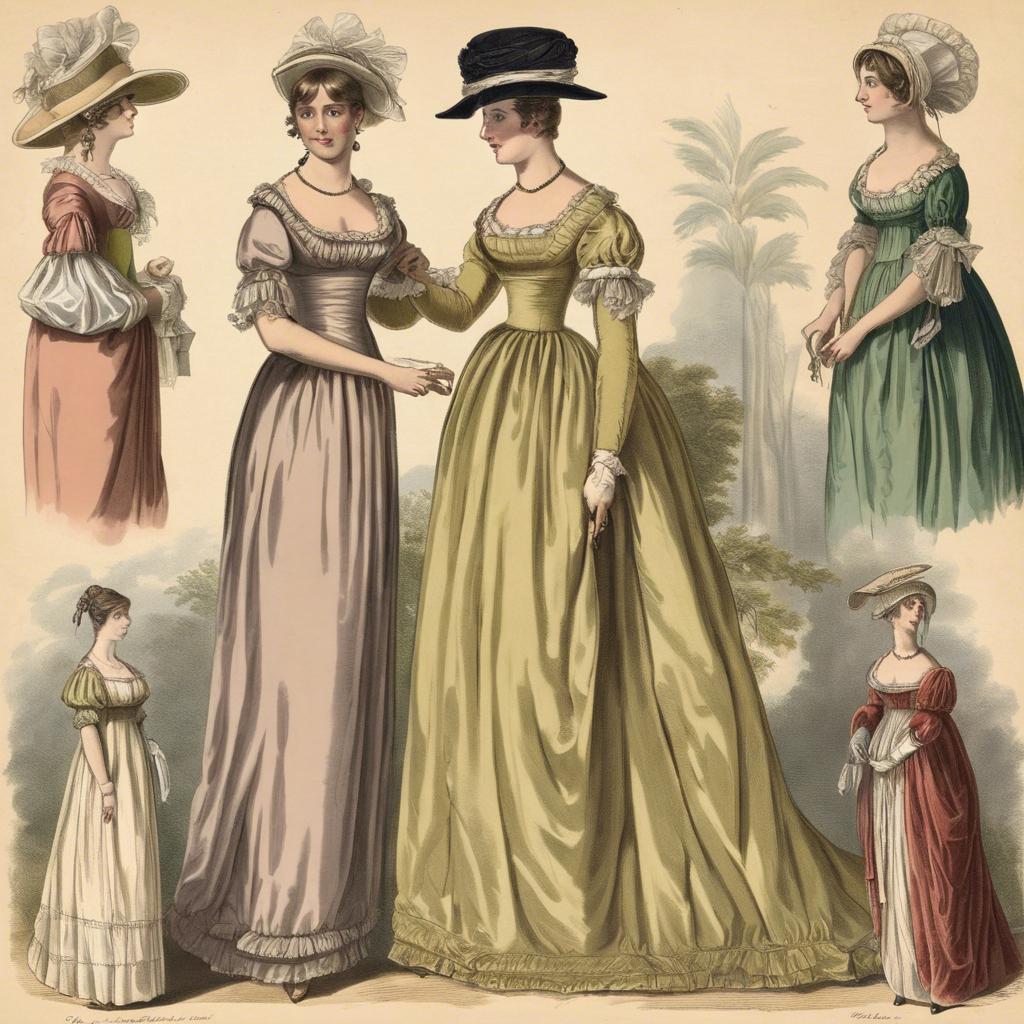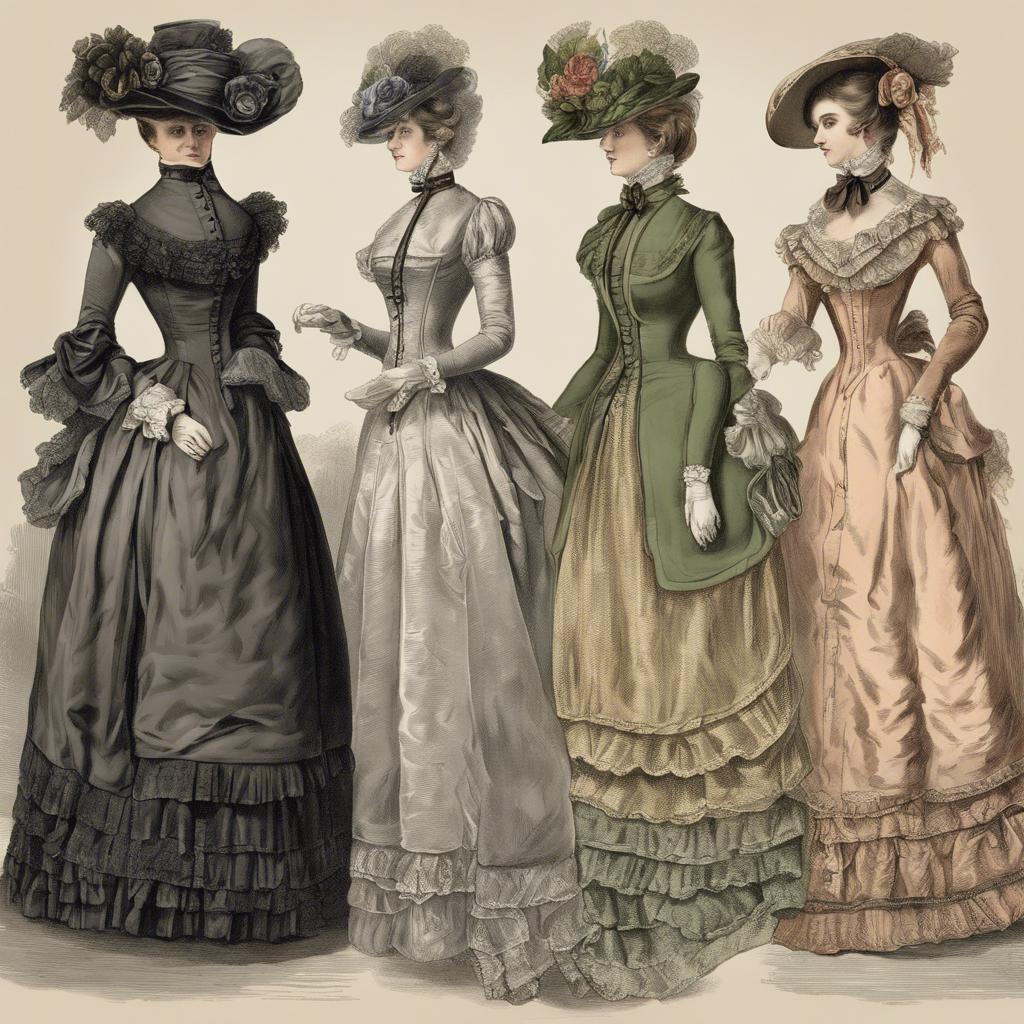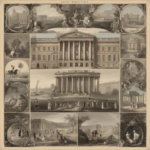In the realm of fashion history, the Regency Era and the Victorian Era stand out as two distinct periods characterized by their unique styles and societal influences. Despite being just a few decades apart, these eras represented different facets of society and culture. In this article, we will delve into the sartorial contrasts between the Regency Era and the Victorian Era, exploring the evolution of fashion trends and the societal forces that shaped them. Join us as we journey through the corridors of time to uncover the intricacies of fashion from these historically rich periods.
Step Into the World of Cheryl Bolen
Dive into the enchanting stories of love, intrigue, and elegance set in the Regency Era. Cheryl Bolen's novels offer timeless romance and captivating tales that will leave you wanting more.
Explore Cheryl Bolen's Books Now
Regency Era Fashion: A Study in Elegance and Simplicity
In the Regency Era, fashion was characterized by its emphasis on elegance and simplicity. Women’s dresses featured high-waisted silhouettes, empire-waist designs, and delicate fabrics such as muslin and silk. These garments were often adorned with intricate embroidery, lace trims, and subtle floral patterns. Accessories like gloves, shawls, and bonnets completed the look, creating a sense of refinement and grace.
On the other hand, Victorian Era fashion was known for its more elaborate and ornate style. Women’s dresses during this period were characterized by voluminous skirts, tight bodices, and an abundance of ruffles, lace, and frills. Fabrics such as velvet, satin, and taffeta were commonly used, reflecting the wealth and status of the wearer. Accessories like parasols, fans, and elaborate hats were popular additions to Victorian ensembles.
Despite their differences, both Regency and Victorian Era fashion reflected the values and societal norms of their respective time periods. While Regency fashion emphasized a more natural and understated beauty, Victorian fashion embraced a more opulent and extravagant aesthetic. Both styles, however, shared a common thread of femininity, elegance, and attention to detail that continues to inspire fashion designers and enthusiasts today.
Victorian Era Fashion: An Embrace of Opulence and Extravagance
During the Regency era, fashion was characterized by simpler silhouettes and light fabrics, reflecting the influence of the French Empire style. Women’s dresses were high-waisted with flowing skirts, emphasizing a natural, slim waistline. Pastel colors, delicate embroidery, and lightweight muslin fabrics were commonly used in clothing design during this period. Men’s fashion featured tailored coats with high collars and fitted trousers, often made from wool or silk.
In contrast, the Victorian era saw a shift towards opulence and extravagance in fashion. Women’s dresses became more elaborate, with voluminous skirts, tight corsets, and intricate embellishments such as lace, ribbons, and feathers. Bold colors and rich fabrics like velvet and satin were popular choices for formal attire. Men’s fashion also evolved, with structured suits, top hats, and cravats becoming staple pieces in a gentleman’s wardrobe.
The differences between Regency era and Victorian era fashion extend beyond just clothing styles. The societal norms and values of each era influenced fashion choices, with the Regency period emphasizing simplicity and elegance, while the Victorian era celebrated excess and luxury. Both periods, however, were marked by a keen attention to detail and a dedication to craftsmanship, resulting in timeless and iconic fashion statements that continue to inspire designers today.
Contrasting Silhouettes: Empire Waist vs Hourglass Figure
In the Regency era, fashion trends emphasized a more natural and flowing silhouette, characterized by the empire waist. This style featured dresses with a high-waisted seam just below the bust, creating a long and slender look. Women during this time period often opted for lightweight fabrics such as muslin, chiffon, and silk to enhance the ethereal and delicate appearance of the empire waist silhouette.
On the other hand, the Victorian era saw a shift towards the hourglass figure, accentuating the natural curves of a woman’s body. This silhouette was achieved by wearing tightly fitted bodices and full skirts, often supported by crinolines or bustles. The hourglass figure became synonymous with femininity and elegance, as women embraced their curves and highlighted their waistlines with corsets and structured garments.
While both silhouettes exude their own unique charm and beauty, the choice between the empire waist and hourglass figure ultimately comes down to personal preference and individual style. Whether you prefer the romantic and lightness of the Regency era fashion or the structured and defined look of the Victorian era, both silhouettes have made lasting impacts on the history of fashion and continue to inspire designers and fashion lovers today.
Exploring Fabric Choices: Fine Muslin vs Rich Velvets and Brocades
In the Regency era, fine muslin was the fabric of choice for women’s clothing. This delicate and lightweight material was favored for its ethereal and flowing qualities, making it perfect for the soft, draped silhouettes popular during this time. Muslin was often embellished with intricate embroidery, lace, and delicate trimmings to add depth and texture to garments.
On the other hand, the Victorian era saw a shift towards opulent fabrics like rich velvets and brocades. These luxurious textiles were favored for their sumptuous look and feel, adding a sense of grandeur and sophistication to women’s fashion. Velvet was especially popular for evening gowns and formal attire, with its plush texture and deep colors exuding a sense of wealth and status.
While both eras had their own distinct styles and fabric preferences, the choice between fine muslin and rich velvets and brocades ultimately comes down to personal preference and the desired look and feel of the garment. Whether you prefer the soft and delicate charm of muslin or the lavish elegance of velvet and brocade, both fabrics have their own unique appeal and can be used to create stunning and timeless pieces of clothing.
Wrapping Up
the Regency era and Victorian era were both pivotal periods in the history of fashion, each with its own distinctive styles and trends. While the Regency era was characterized by simplicity and elegance, the Victorian era was marked by extravagance and opulence. From the high-waisted Empire silhouette of the early 19th century to the cinched waist and full skirts of the mid-19th century, both eras left a lasting impact on the world of fashion. By examining the evolution of style and trends during these two eras, we gain a deeper understanding of the cultural and societal influences that shaped the way people dressed. As we continue to draw inspiration from the past, we pay homage to the rich history of fashion and celebrate the timeless beauty of Regency and Victorian era garments.


